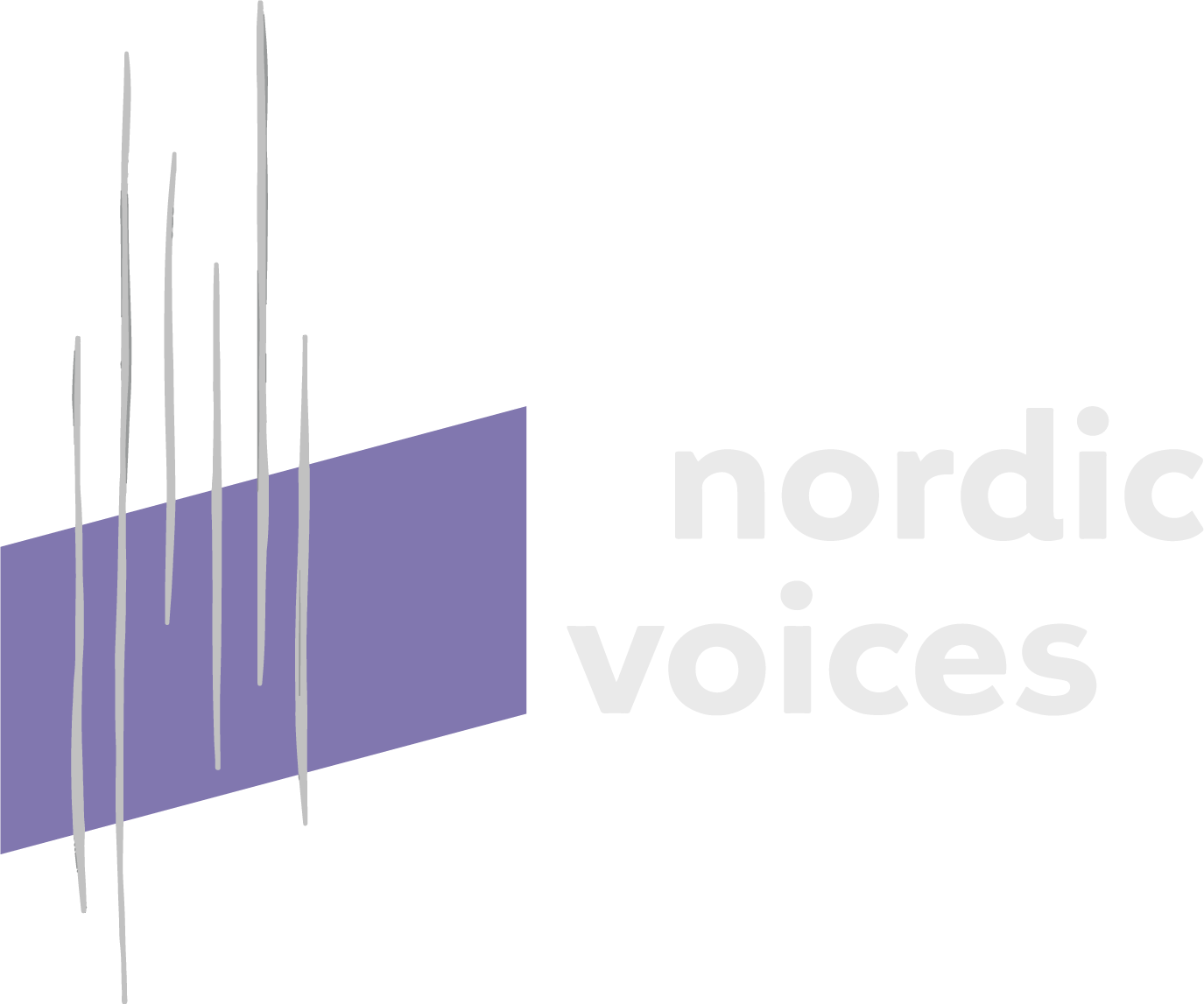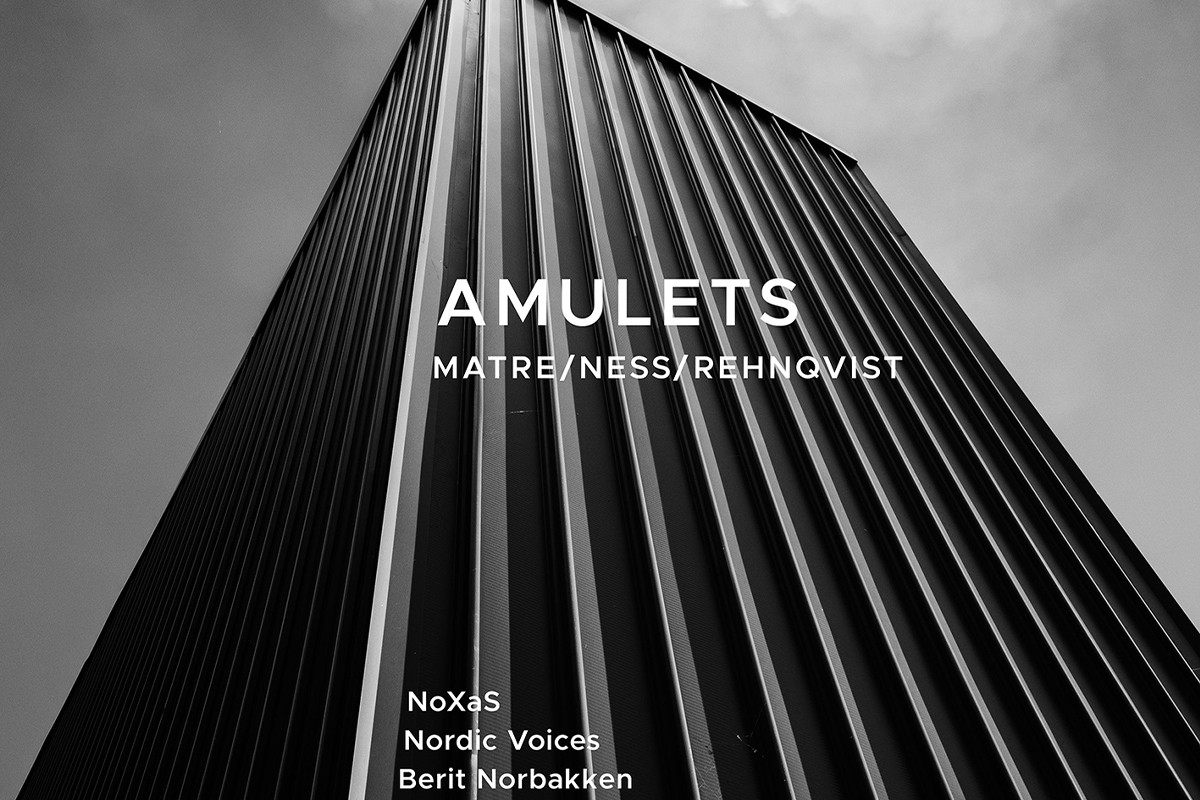Konsert med NoXaS, Nordic Voices og Berit Norbakken
Amulets
Ørjan Matres mesterlige instrumentering i verket «Six Orphic Amulets» viser saxofonens fleksibilitet. Ofte lager de fire instrumentene et bakteppe for sangerne, eller de tvinnes inn i det vokale slik at skille mellom sang og saxofon viskes ut. Karen Rehnqvists verk «Ock av Törnen» har et nesten tidløst uttrykt med store dynamiske spenn i register og dynamikk. Uttrykket er hudløst, ekte og dramatisk.
Søndag 2. juni kl 18:00 Marmorsalen, Sentralen, Øvre SLottsgate 3. Oslo
Billetter her:
https://tix.no/nb/sentralen/buyingflow/tickets/30706/66348/
ØRJAN MATRE (*1979):
Six Orphic Amulets (2017) for vocal sextet and Saxophone quartet
In Ørjan Matre’s piece Six Orphic Am- ulets, the composer uses texts from the Orphic Gold Tablets, thirty-five small pieces of gold foil that have been found in graves scattered throughout ancient Greece and Rome. The tab- lets are inscribed with texts in ancient Greek that vary in length from one word to sixteen lines of poetry. These fragments of text have inspired Ma- tre to find musical objects and small phrases of music which also seem to have existed around humanity for thousands of years. Six Orphic Amu- lets is filled with emotions, supplying the power to provide voice to deeper needs. Listening deeply to this and thinking about the mystery of life will reap its rewards and provide an insight into how people have always tried to ensure a smooth transition to the underworld. The saxophones and the voices both cultivate the myste- rious, closed, and incomprehensible texts and dissolve it in music. Matre recreates old occult thoughts, makes a connection from antiquity to what we experience here and now, and succeeds in bringing out this atmosphere in the music.
The longer texts provide instructions and information to guide the soul of the deceased as it makes its way through the underworld, ensuring that it receives preferential treatment from the rulers down there.
The first movement uses text from a gold tablet found in the ancient city of Pherae, Greece. It dates back to the middle of the fourth century BC. The rather peculiar word andrikepaido- thyrson has no significant meaning though it does contain the ancient Greek words for man and child. The whole word also recalls Erikepaios, an enigmatic name of the primordial god from the rhapsodic theogony of Orpheus.
The text in the second movement is not derived from any gold tablets, but rather from three tiny bone tab- lets found in Olbia. They are dated to the fifth century BC and contain pairs of antonyms; life/death, peace/ war, truth/lie and body/soul. The sen- tence “I am a child of Earth and starry Heaven” (third movement) is a for- mula found in several of the gold tab- lets. It is thought to be a password the deceased should respond with when asked who she is by the guardians of the spring of Mnemosyne (memory).
The golden plate of Thurii contains a stream of seemingly nonsensical words and syllables, but hidden inside are several names of ancient Greek gods. Movement four uses the non- sense words, with movement five including an incantation of the godly names.
The final movement, Chaconne: The lake of Mnemosyne, is an instruction on how to behave when arriving in the underworld. Only parts of the text are preserved, but we glean from it that the initiate is discouraged from drinking from the streams of Lethe (forgetfulness), and should instead drink from the lake of Mnemosyne (memory).
KARIN REHNQVIST (*1957):
Ock av törnen (2001–02) lament for saxophone quartet and female voice.
Karin Rehnqvist’s piece Ock av törnen (And also Thorns) has a true connec- tion to the north and Scandinavia, in the form of singer Berit Norbakken and NoXaS. Berit Norbakken’s voice and the saxophone quartet have a lot in common when they perform this music, sharing a clear interpretation of the timbre and breathe inherent in Karin Rehnquist music. This is espe- cially apparent when the voice uses ‘kulning’, an archaic style of singing or calling. This is a technique used in Swedish folk music, traditionally em- ployed outdoors, to call animals or to communicate with other people over long distances. In the musical mate- rial of this piece some old Swedish traditional chorals are hidden. The texts come from The Book of Psalms and the Swedish Hymnal. Listening to Karin Rehnquist’s music evokes north
ern landscapes and the northern si- lence. Scandinavian psalms may be a misleading term, as ‘psalms’ in Swed- ish are more accurately translated as ‘hymns’. The music of these old songs often suggests a sense of vulnerability that has its own quality. Nature and folksong are everywhere you turn in Nordic music, and the church is not far behind. Karin Rehnquist creates vivid musical images and a strong emotion- al experience that everyone is free to interpret in her music.
1) Klagosång / Lament
Sion klagar med stor smärta, /
Ropar i sin tröstlöshet, / Gjuter ut sitt sorgsna hjärta, / För den som dess hjärta vet, / Säger ”Herren haver sig / Bortvänt övergivit mig. / Han ej mer sig låter finna, / Fåfängt mina tårar rinna”. / Rädda mig Gud / Jag har sjunkit ner i bottenlös dy / Vattnet når mig till halsen / Jag har inget fotfäste / Strömmen vill dra ner mig / Jag har ropat mig trött / Min strupe är hes / Jag har väntat länge på min Gud (Heerman, 1937 års svenska psalmbok,
nr. 168 Rädda mig Gud / Psaltaren 69)
Zion laments forth great pain / Weeps in desolation / Pours out suffering
and shame / To the heart’s creation. / Says the Lord my God / Abandoned me on this shore / To be rescued nevermore / Bereft of staff and rod.
/ Save me, O God, / for the waters have come up to my neck. / I sink in the miry depths, where there is no foothold. / I have come into the deep waters; the floods engulf me. / I am worn out calling for help; / my throat is parched. / My eyes fail, looking for my God.
(Swedish Hymnal / Book of Psalms 69:1-4)
2) Jag lyfter blicken /
I lift up my eyes to you
Jag lyfter blicken mot dig / du som bor i himmelen / Jag lyfter ögat mot himmelen / Jag lyfter mina händer / Var är min hjälp?…
(Psaltaren m.m.)
I lift up my eyes to you, / to you whose throne is in heaven / I lift up mine eyes / I lift up my hands / Whence cometh my help?
(Book of Psalms 123:1 and more)
3) Måste ock av törnen vara / …and also thorns
Måste ock av törnen vara / Här din krona, o min brud, / Tårar dina pärlor klara, / Suckar dina sångers ljud, / Lyft dina ögon upp ock se / Över jordens kval ock ve / Himlen öppnad, palmen vunnen / Livets krona
saligt funnen
(Pauli, Wallin, 1937 års svenska psalmbok, nr. 168)
It must also thorny be / This thy crown, my bride. / Thy tears the brightest pearls of the sea / Mournful songs, thy sighs / Raise up now thine eyes and see /
Beyond this worldly misery / Heavens opened, palm conceived / Blessed crown of life achieved.
(Swedish Hymnal)
4) Rädda mig ur dyn / Rescue me from the Mire Rädda mig ur dyn (Psaltaren 69)
Rescue me from the Mire
(Book of Psalms 69:14)

